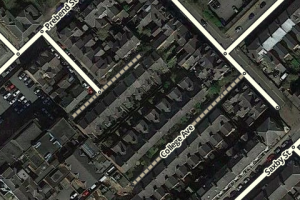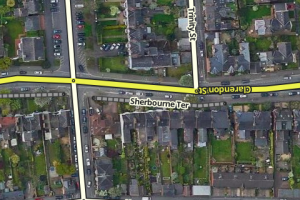Introduction
Walking Trails are a group of non-drivable road types available in the WME found under the Roads menu. Waze will not use any of these road types for routing. As Waze is designed as a commuter driving aid it has no plans to support the use of the App for walking or cycling. These road types are available as there are limited situations, when mapped correct, non-drivable segments can improve the user experience.
Editors should only map Walking Trails that are a benefit to Wazers driving motor vehicles, if it doesn't have a proper name it is unlikely to be of benefit. Any road that only encourages or benefits non-driving users should not be mapped. By over mapping Walking Trails it may encourage the use of Waze by users such as walkers or cyclists, this could lead to the pollution of speed data and create false congestion reports and negatively influence routing.
| Be aware of the WME language setting! This article uses localised names which can be found when using the English (UK) language. |
Walking Trails
Footpaths - When a destination can only be reached along a mapped Footpath the route will end at the virtual node at the junction with the drivable segment. The App should snap wazers to the alignment of a Footpath when displaying their location.
| As of writing (September '18), virtual nodes are not working correctly and destinations along them may cause URs due to bad routing. Tested again May 2020, no change |
Pedestrianised Area - The routing server will not take Pedestrianised Areas into account when calculating routes even if the segment is closest to the destination, instead it will route to the closest drivable segment or Footpath. The App will not snap wazers to this road type.
Stairway - Do not use this road type as it has not benefit for mapping in the UK.
Characteristics

Any of the Walking Trails road types can be connected to a drivable road segment. Instead of creating a standard junction node a 'virtual' node is created. This does not split the drivable segment and will not allow routing onto the non-drivable segment, turn arrows will not appear.
It is not possible to convert any of the Walking Trails' road types to any of the other road types available in the WME, nor vice versa. Should a drivable road be permanently closed and requires converting to a Footpath, it is necessary to delete the original segment and draw a new Footpath segment along the same alignment. This is also true for the reverse scenario.
House numbers can be added to any of the Walking Trails, routing to mapped house numbers works based on the routing behaviour mentioned above. If the house number is on a Footpath Waze will only ever route the wazer to the virtual node junction with the drivable segment. For Pedestrianised Areas and Stairways Waze will route to the closest location to the house number navigation point.
When to map Walking Trails
Footpaths

In heavily built up areas it is possible some destinations, such as a row of terraced houses, can only be accessed via foot. When mapped using the Footpath road type wazers will be routed to access point on the road regardless where the destination is along the Footpath.
It is worth noting that when a Footpath is connected at both ends to drivable segments the routing server will choose whichever end it believes to give the best route to the destination, this is due to Footpaths having fixed speed data of 2 m/s. This can be used to map a location that has access from 2 drivable segments, such as a railway station with no car park or main entrance.
There are occasions when a major Google Maps location, such as an airport, is returned in the App results and can not easily be linked to the Waze location. By mapping a 'false' Footpath from the pin location to a sensible point in the WME this can solve routing errors.
| Due to the App snapping wazers to this type of Walking Trail, avoid mapping Footpaths close in parallel to drivable segments. |
Pedestrianised Areas

When a short group of houses have a separate name to the road they are located on you can use an alt name on the drivable segment, however when you add house number to the segment it will only associate the house number with the primary name. By mapping a Pedestrianised Area parallel to the drivable segment you can add the correct name and house numbers. The App will then route to the closest point on the drivable segment to the navigation point of the house number on the Pedestrianised Area.
Some pedestrian only routes are so well known they can act as landmarks themselves, having them appear in the App can help wazers as a navigation reference. Using Pedestrianised Areas means there is no risk of the App snapping the wazer onto the mapped segment and creating routing errors.
Consideration may be made on using a Pedestrianised Area segment to map a non-drivable route that shows up in the GPS traces but is clearly inaccessible. This may be due to wazers forgetting to close their App or deliberate misuse of the route. By mapping with a Pedestrianised Area it would prevent pollution of the speed data of nearby drivable segments.
Stairways
Do not use in the UK.
What not to map
- Footpaths along roads - these should never be mapped, the road segment is enough for Waze to create routing choices and the proximity of the segments means one will hide the other when viewed in the App.
- Canal tow paths - unless the tow path is the only means to get to a destination, mapping the canal itself is a better visual navigation reference than the tow path.
- Parks & tourist attractions - similar to mapping parking roads, Waze is not intended to navigate around a country park or theme park. Once the waze has got to the main destination we want Waze to 'go quiet' to allow the wazer to concentrate on their final task, be that parking up or following local signage. Mapping every pathway in a local park only adds clutter to the map.